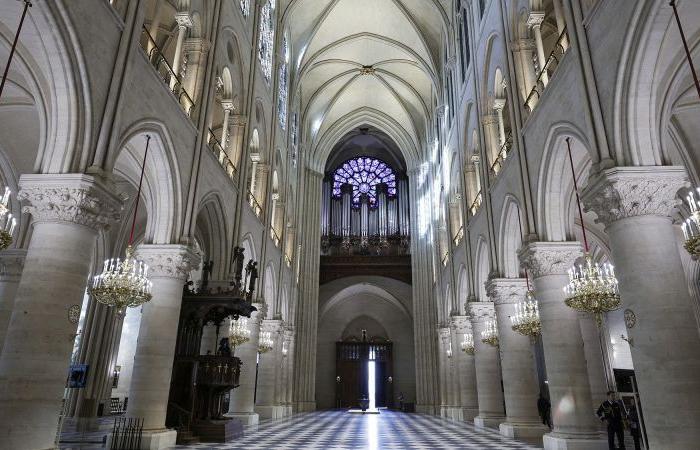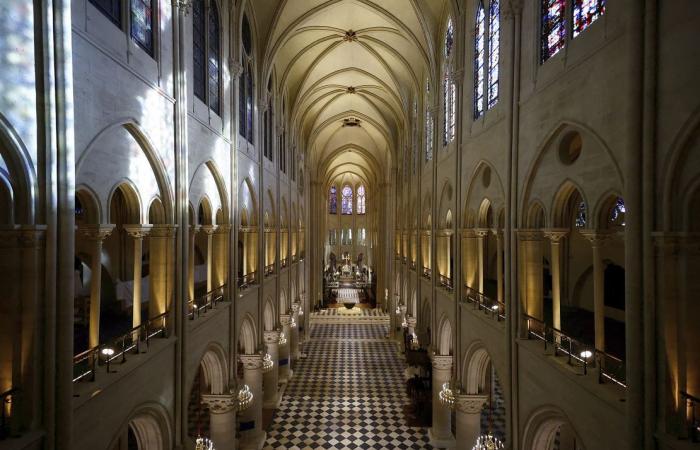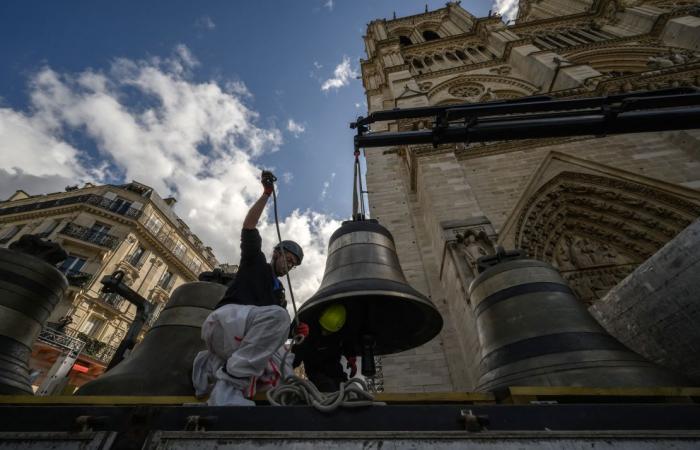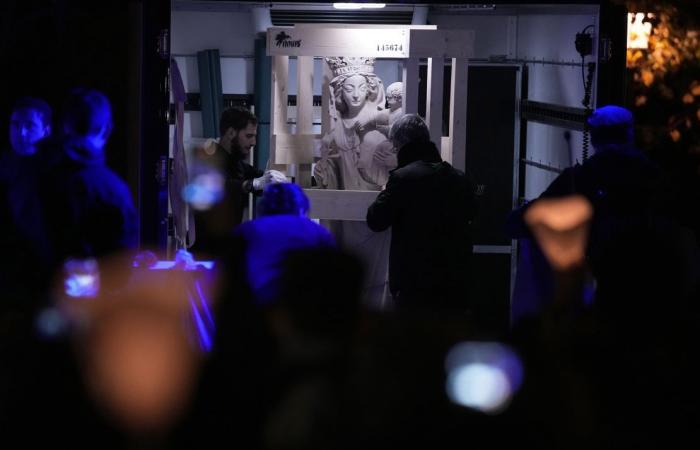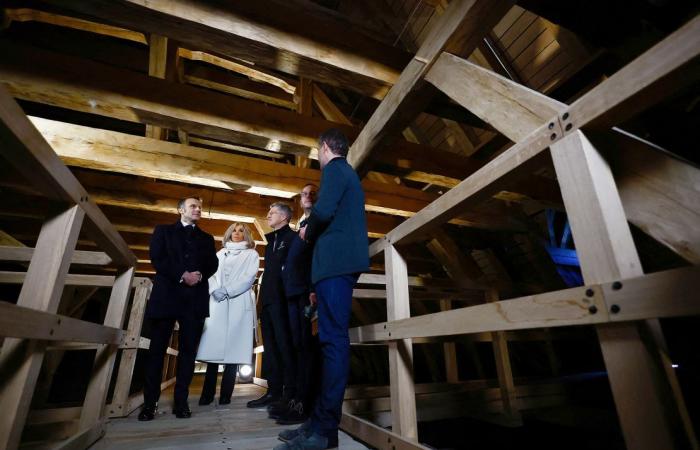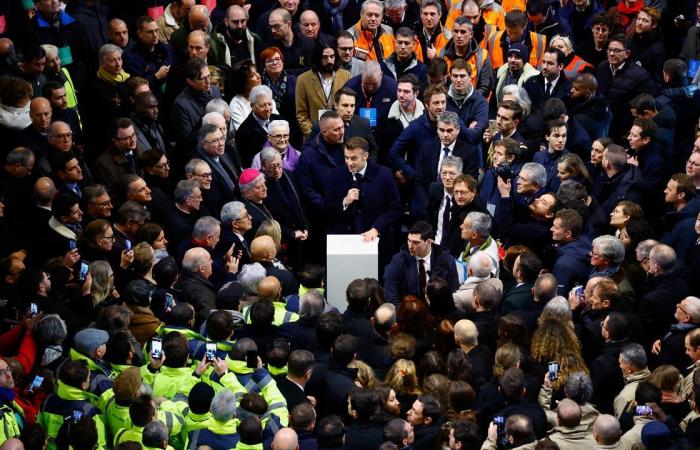Paris
CNN
—
Politely hidden behind construction hoarding, razor wire and a gauze of scaffolding, “Our Lady of Paris” has been healing.
Five years after the flames roared and the world held its breath, Notre Dame cathedral is coming back to life.
“It’s a wonder. Even for us who are very often in the cathedral, it doesn’t get old, it gets more beautiful every day,” Philippe Jost, the head of the effort to rebuild Notre Dame, said in November.
“There’s a Sistine Chapel effect,” he said of returning to the beloved landmark, with something to see and discover wherever you look.
With the cathedral set to open to the public on December 8, even today, the cause of the catastrophic fire that blazed through the monument on April 15, 2019, remains a mystery, though investigators believe it was accidental.
Regardless, the numbers behind the reconstruction efforts are striking. Restoring the historic monument to its former state has cost an estimated €700 million ($737 million), according to Rebuilding Notre Dame de Paris, the public body headed by Jost which is responsible for the work. Overall, €846 million ($891 million) were raised in donations from 340,000 donors in 150 countries, with the extra funds used to restore other monuments.
Beyond that, there are the materials used in its rebuilding: The tallest oak felled was 27 meters tall (88 feet high), 1,300 cubic meters of stone were replaced, 8,000 organ pipes (belonging to France’s largest instrument) cleaned and retuned, 1,500 solid oak pews hewed – all the work of 2,000 dedicated artisans.
The result of their labor is even more impressive.
A few steps beneath the cascading statues of the cathedral’s magnificent façade, dark gives way to light.
The naked columns of the cathedral soar up to the ceiling; the walls, stripped of centuries of dust and grime, appear brand new.
The cost of the fire hasn’t just been financial – the careful cleaning and restoration has stolen some of the mystical gloom and charm that visitors will remember. But those responsible hope it will ensure the health of the building for centuries to come.
France’s President Emmanuel Macron set an ambitious target for reconstruction five years ago and, with his visit on Friday, returned to thank the hundreds who doused the flames and helped with restorations.
Over much of the preceding 2,055 days, the site had been a hive of industry, with teams cleaning marble mosaics, retouching frescoes and clambering over the anthill of scaffolding that filled the center of the landmark.
CNN teams have visited Notre Dame several times since the fire, even as the work ploughed on through Covid-19’s stranglehold on France.
For CNN cameraman Mark Esplin, one change has been most striking. He recalls how there was still a “huge hole in the ceiling” when he was granted permission to tour the site in 2019, adding: “You could see right up to the sky.”
Like many in 2019, a CNN team watched in horror, mere meters away, as the cathedral’s spire was wrapped in flames before toppling to the ground. Late in the evening, they heard hundreds of people gathered around the landmark raise their voices in hymn.
“I remember the smell … Mark and I got so close that my jacket stank of smoke for days,” recalls Senior Producer Saskya Vandoorne.
Today, the octagonal base of the new 315-foot spire – almost identical to the one designed in the 19th century by architect Eugène Viollet-le-Duc – has filled that void in the ceiling. Seen by so many as a symbol of strength and dedication to the rebuilding efforts, the wooden spire finally shed its scaffolding and returned to the Paris skyline early last year.
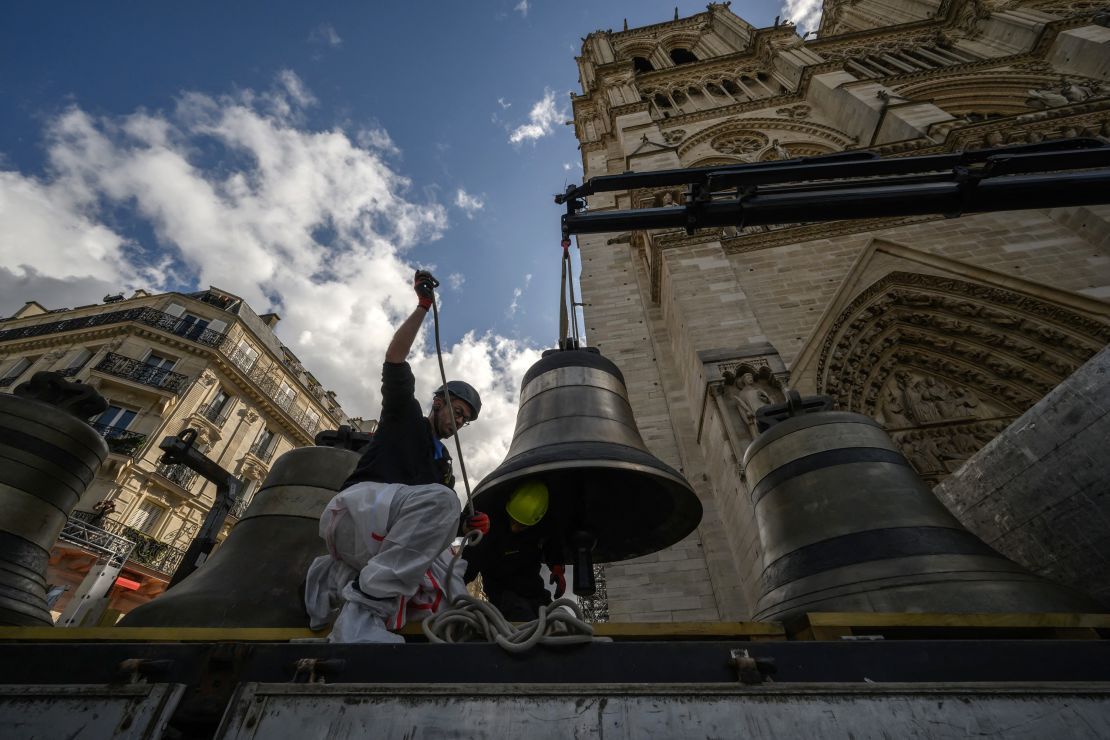
Hearing the bells ring out last month for the first time since the fire was another important milestone.
The eight restored bells of the cathedral’s northern belfry, which was partially destroyed in the fire, tolled in early November as part of a technical test before Notre Dame’s grand reopening weekend on December 7 and 8.
Some Parisians hailed the return of the almost-life size statue of the Virgin Mary to Notre Dame, which also took place in November, as “miraculous.” Considered the symbolic heart of the cathedral, it was somehow spared in the fire.
Its return last month – during an evening procession attended by hundreds – was yet another sign of the deep emotion that this recovery has sparked in the hearts of so many in France.
For Monseigneur Patrick Chauvet, who was rector of Notre Dame de Paris at the time of the fire, the memories are still raw.
“It was an apocalyptic vision, the cathedral was upside down,” he said of his first look inside Notre Dame after the blaze.
“I haven’t fully recovered from it; it’s engraved in the depths of my being.”
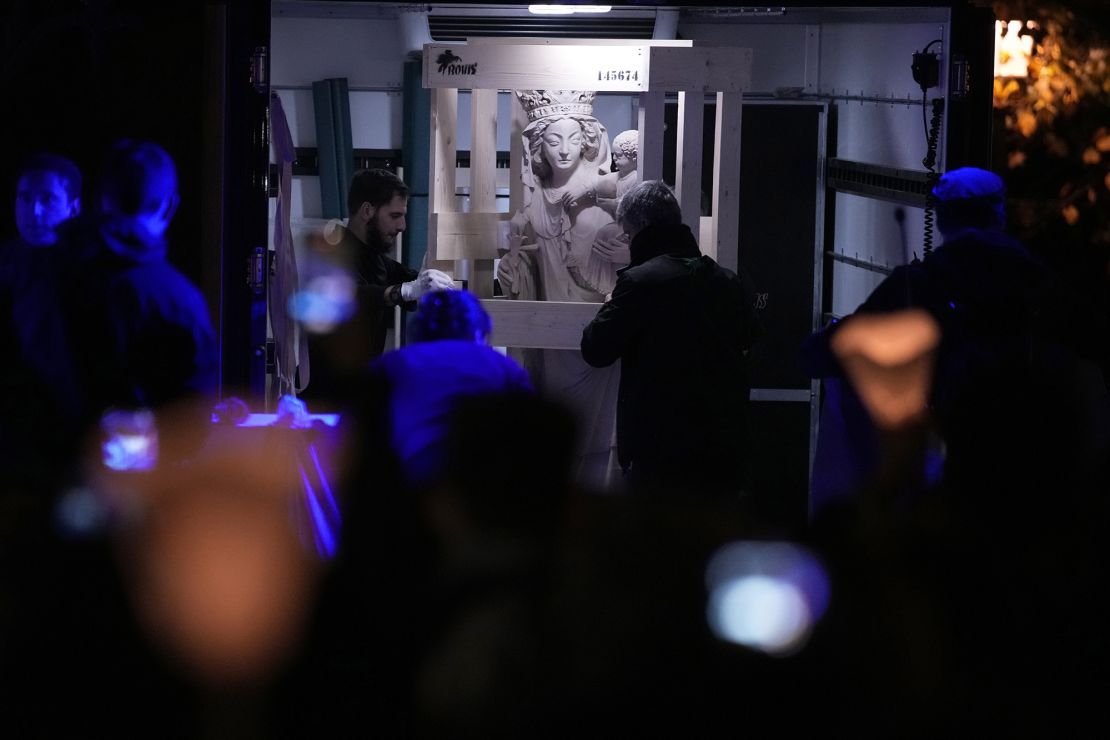
On the night of the fire, with the air still acrid with smoke, Macron made a solemn promise.
“We will rebuild Notre Dame. Because that’s what the French expect and because it is what our history deserves,” he said outside the ruins of the cathedral.
It was then that he set the bold deadline of five years to rebuild, which to many seemed an impossible task.
Few beyond those directly involved have been allowed in to see how the specialized laborers and craftspeople have replicated the techniques and materials of the cathedral’s original construction.
But for those soon to revisit Notre Dame, this improbable victory is best seen by looking up.
The ceiling is a lattice of some 1,200 oak logs – the “forest” as workers call it – which were felled in a former royal wood, just like the beams that held up the original roof.
Harvested in France’s west, and fashioned into towering frames in the country’s northeast, the oaks of Notre Dame’s newly soaring roof, wound their way back to Paris along the River Seine.

Atop sits the spire, with a golden phoenix now at its summit, symbolically replacing the rooster that was found amid the rubble of the fire.
Remarkably, most of the original beams of the cathedral dated from before 1226, with the oldest from a tree felled in 1156.
Even today, the country boasts the world’s largest reserve of mature oaks, a unique boon for the rebuilding efforts. Three of the oaks used in the restoration were 230 years old, according to France’s National Forestry Office.
Carpenters with the “savoir faire” to fashion the trees into medieval-style frames were plucked from across France and the world, a move similar to all the highly specific skills required for the restoration: stone masons, metal workers, organ builders and more.
These artisans, working in concert with larger companies, were able to repurpose antiquated building practices at scale, in lieu of faster and cheaper modern building techniques.
For the man tasked with overseeing the cathedral’s reconstruction, using those traditional methods was crucial. “It’s authenticity, it’s the care to respect the monument,” Jost told CNN. “We use the same materials, oak and stone, and with the same techniques.”
In pictures: First look at Notre Dame’s breathtaking restoration five years after fire
Stripped bare of her usual trappings – the pews, hymn books and candles of everyday worship, the tourists of our age and the pilgrims of centuries past – Paris’ treasured cathedral has not been the same.
But despite the indignity of the restoration – the noise, plastic sheeting and metal bars – the majesty of Notre Dame is undeniable.
Perhaps the most recognizable elements within Notre Dame are its famed stained-glass windows – masterpieces of French Gothic art – and, in particular, its three rose windows set into the north, south and west facades.
While the glass extraordinarily survived the fire, it required careful restoration to resolve smoke and lead damage as well as extensive cleaning after decades of weathering and wear and tear.
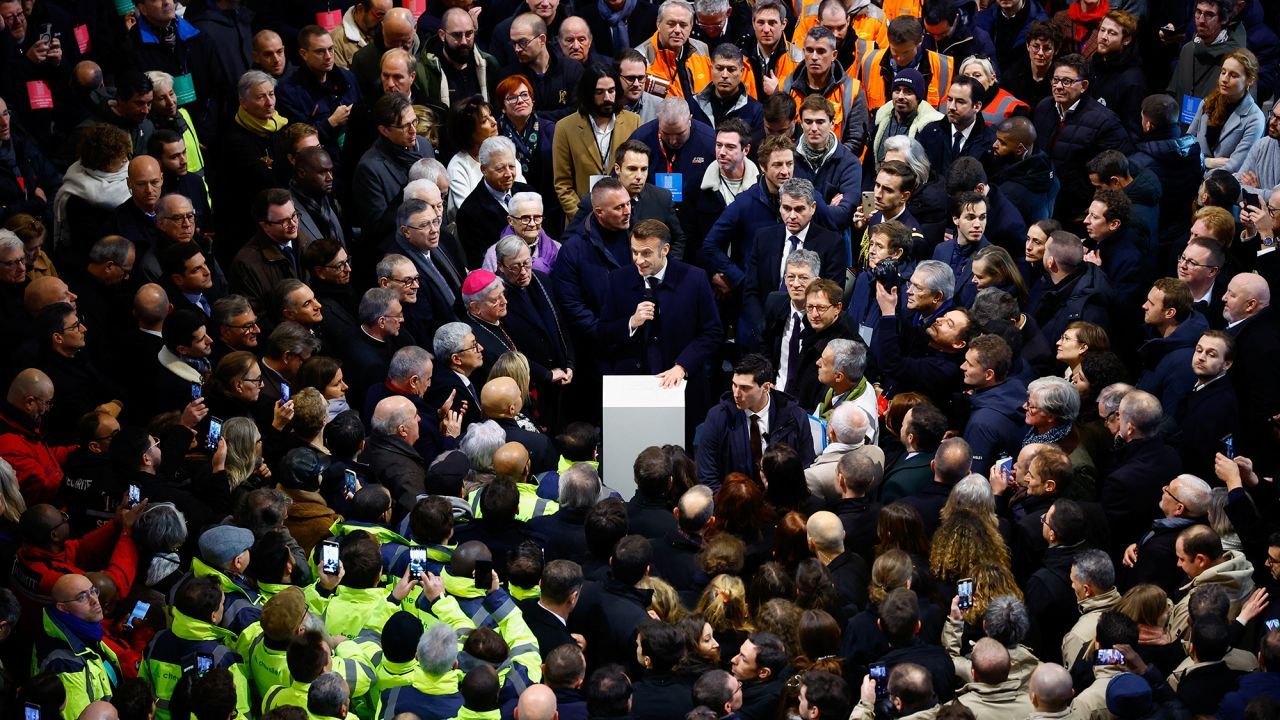
Macron thanks workers for 5-year Notre Dame reconstruction
Years of grime have been removed, restoring the vibrant colors so that once more, lipstick reds and lapis lazuli blues bathe the cathedral’s interior when the daylight shines through.
In the days, months and years ahead, Notre Dame – hailed as one of the greatest instances of French Gothic architecture – will retake its place in Paris’ cultural pantheon.
Many will be eager for their first visit to this newly restored landmark. And the fiery colors of those famous windows will surely be all the proof needed that Notre Dame – scarred and wounded but transformed – lives on.

